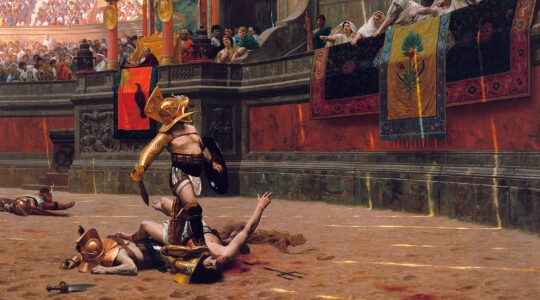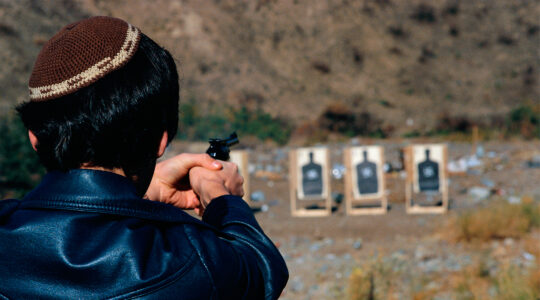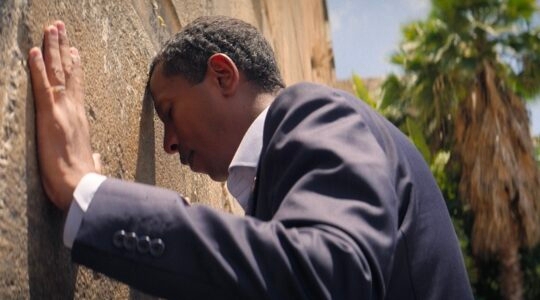LOS ANGELES (JTA) – Most Germans today will acknowledge the wartime atrocities of Hitler’s Waffen SS units, but many insist that the regular army Wehrmacht soldiers fought and behaved honorably.
It’s not difficult to understand the rationale. To admit that one’s caring father or grandfather, whose photo rests on the bookshelf, enjoyed massacring helpless civilians is so wrenching a thought as to mobilize every psychological self-defense mechanism.
These defenses were put to an excruciating test in 1999 when the Wehrmacht Exhibition opened in Munich, the cradle of Nazism, and went on to tour major German cities in the following five years.
Included in the exhibit were photos and letters from ordinary Wehrmacht soldiers on the Russian front sent to the folks at home, much as tourists might mail pictures of exotic landmarks and colorful natives.
But these pictures and film snippets showed grinning German soldiers posing with the lynched bodies of civilians, or playfully cutting off the beards of Jews, or mowing down groups of naked women.
Wherever it went, the exhibit triggered demonstrations, not only by skinheads but also respectable burghers who refused to believe what they had seen and claimed the photos and footage had been manufactured by Russian propagandists.
In the documentary “The Unknown Soldier,” opening in several cities this month, German director Michael Verhoeven sees the exhibit as a litmus test of German willingness to confront the past, a theme he examined earlier in “The White Rose” and “The Nasty Girl.”
Verhoeven shows some excruciating material from the exhibit itself, but the film focuses mainly on the reactions of German historians, veterans and ordinary citizens to the indictment of widespread national guilt. Some of the most dramatic scenes are from street demonstrations against the exhibit.
Such intense emotions have been revived by the release of the film.
In choosing its title, Verhoeven played with an incendiary double meaning. The Unknown Soldier is, of course, among every nation’s most revered icons, but in this case the title also refers to the unknown crimes of the German fallen and surviving veterans.
Verhoeven records that he is frequently confronted by critics who ask, “Did I know of any other people besides the Germans who would defile their own soldiers who fought for their country?”
The director responds: “I am not searching for ready answers. Each country has its own history, and I’ll stick to mine.”
Besides its emotional impact, the film cites some facts from German archives that are worth noting.
While the tendency is to link the Holocaust to Auschwitz and other death camps, some 40 percent of victims were killed in individual and mass shootings. Among some 4 million Russian prisoners of war taken by the German Wehrmacht in the early stages of the war who never returned, half were killed almost instantly. The other half died within nine months.
Even here, Jewish POWs were separated from their comrades and shot first.
The film’s most damning indictment of the Wehrmacht, however, is that in Nazi-occupied areas, the regular army’s officers were in command and had the authority to support or block the SS death squads. With very few exceptions, Wehrmacht commanders gave the SS the green light.

Help ensure Jewish news remains accessible to all. Your donation to the Jewish Telegraphic Agency powers the trusted journalism that has connected Jewish communities worldwide for more than 100 years. With your help, JTA can continue to deliver vital news and insights. Donate today.





